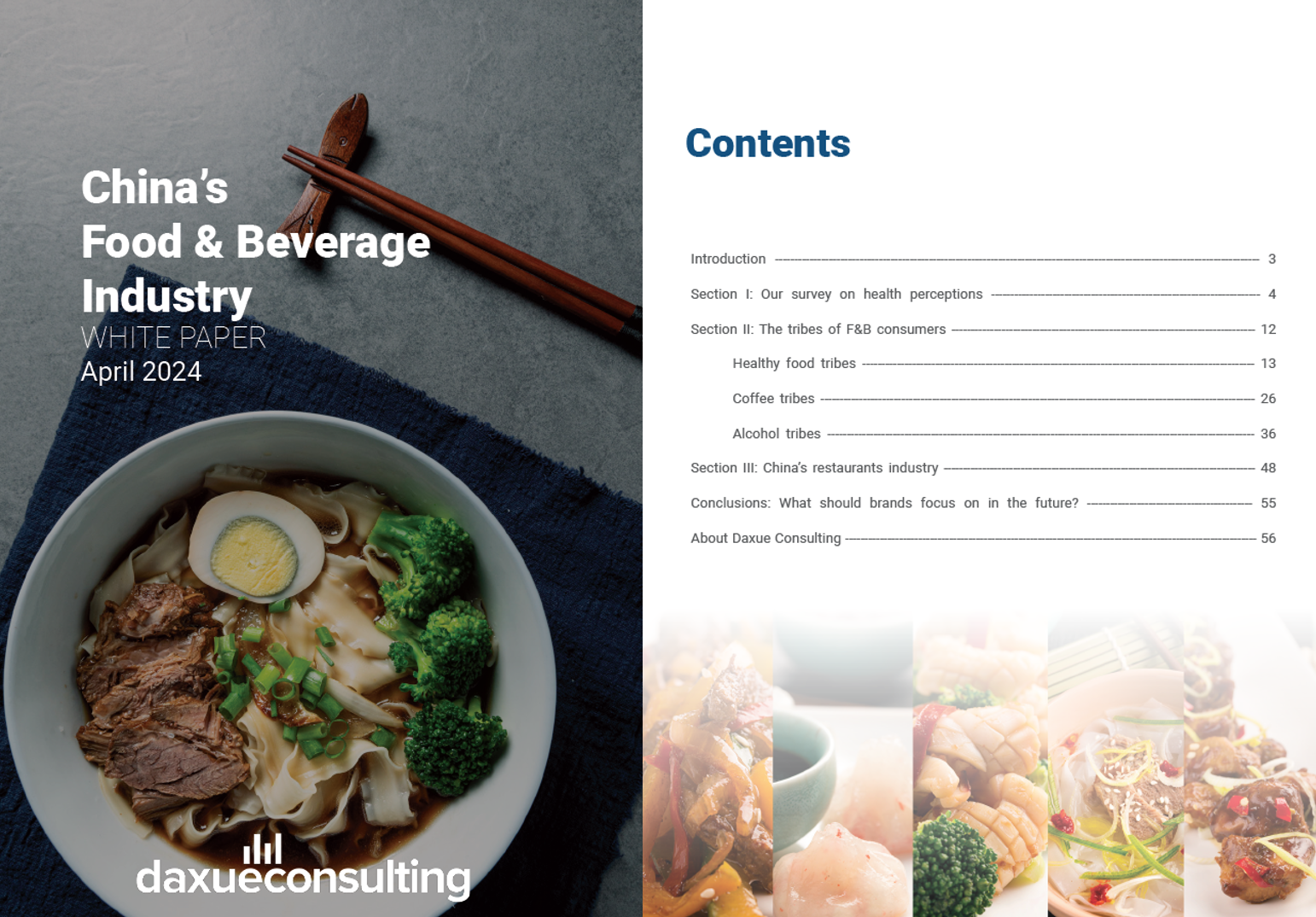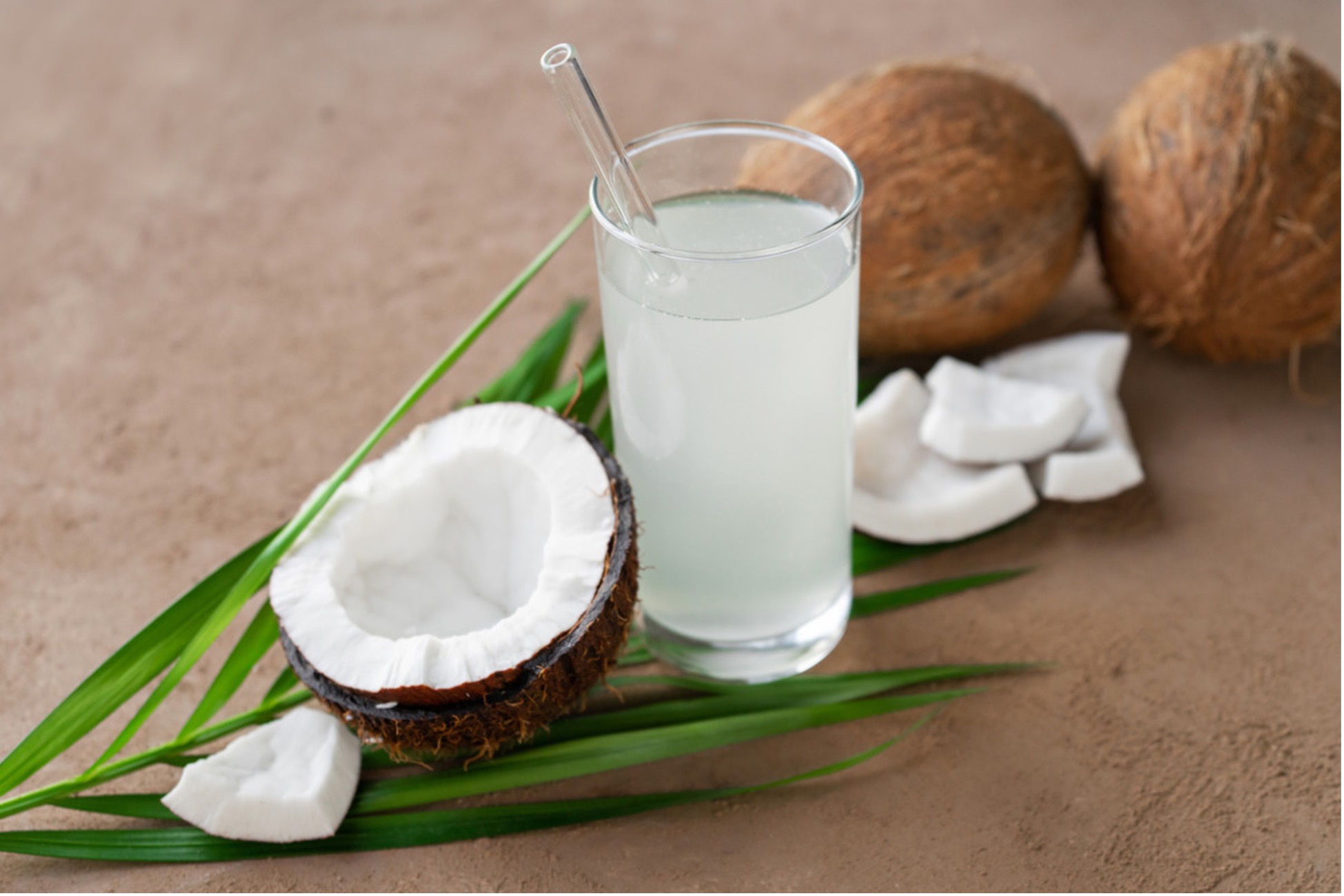China’s coconut water market has surged in recent years, transforming from a niche segment into a booming industry. Coconut water in China has been driven by rising health awareness and savvy marketing, making it one of the fastest-growing beverage categories in China. Once a niche beverage, the coconut water market in China grew from just USD 101.8 million in 2019 to USD 1.09 billion in 2024—a nearly tenfold expansion in five years (~61% CAGR).
Download our China F&B White Paper

Despite this surge, China still accounted for only ~6% of global coconut water sales in 2023, whereas North America held roughly 25%. This segment is projected to maintain double-digit growth to continue through 2027. This positions China as a key driver in the global coconut water market and the largest Asia-Pacific market by 2030.
Health and wellness drive the popularity of coconut water in China
Chinese consumers are prioritizing natural and low-sugar beverages, which propel coconut water’s adoption. The broader beverage market reflects this shift – health awareness is reshaping preferences and boosting nutritious drinks over sugary sodas. Coconut water hits the sweet spot: it is fat-free, low in calories, and perceived as “pure and natural”, aligning perfectly with modern health trends. Coconut water offers multiple benefits (natural electrolytes, hydration) without high sugar content, making it a popular alternative to soda and sports drinks.
Social media hype and consumer evangelism
Chinese social platforms have played a big role in coconut water’s rise. On lifestyle app Xiaohongshu (also known as RedNote), the hashtag “#椰子水” (#coconutwater) has amassed over 750 million views, with hundreds of new posts each month. Users share creative ways to enjoy coconut water:
- Fitness enthusiasts post daily workout hydration using coconut water
- Moms tout it as a natural electrolyte during pregnancy
- Urban professionals mix it with tea, coffee, or fruit for trendy concoctions
This has normalized coconut water as a daily beverage for many urbanites. According to the CBN Data report, urban white-collar workers account for 45% of consumption, with usage also strong among sports enthusiasts (32%) and young mothers (18%).
Product innovations and “Everything is Better with Coconut!”
The surging demand has spurred a wave of innovation in China’s beverage scene. In 2021, Luckin Coffee kicked off the craze with its hit coconut milk latte, selling over a hundred million cups and inspiring the slogan “万物皆可椰” (“everything is better with coconut”). Originally, coconut flavor in drinks was often from coconut milk, but soon coconut water itself took center stage. By 2023, major tea chains like HeyTea, Naixue, and Cha Panda launched new drinks using 100% coconut water as the base instead of tea.
For example, HeyTea introduced cocktails of green tea, fresh fruit, and chilled coconut water topped with pistachio cream. Meanwhile, coffee chains like Manner rolled out coconut-water jasmine matcha drinks, all capitalizing on coconut water’s light, tropical taste. The vibrant product development shows how brands are leveraging coconut water’s versatility. It blends well with coffee (to soften bitterness), with tea, or as a mixer in fruit smoothies. This versatility, high “natural” appeal, and photogenic presentation have cemented coconut water as a drink for Chinese consumers’ hydration.

Supply-side challenges affecting the coconut water market in China
Over 90% is imported from Southeast Asia, with Thailand, Indonesia, and Vietnam as the top suppliers. Domestic production (mainly Hainan province) accounts for only around 10% of the supply. Despite the heady growth, China’s coconut water industry faces significant supply-side challenges. The country simply cannot grow enough coconuts to meet demand. Thailand has historically been a key supplier, known for its aromatic young coconuts (and home to the leading brand IF). Vietnam, newly authorized in 2024 to officially export fresh coconuts to China, is rapidly scaling up and competing on price.
The heavy import reliance creates vulnerabilities. A drought or typhoon in Southeast Asia can tighten supply and spike prices overnight. Import costs are also exposed to tariff changes and geopolitical shifts. For instance, tariffs on coconut products can be steep, reported up to ~30-40% for some countries. This squeezes the margin for importers. The supply imbalance is also an opportunity: foreign coconut producers (from Thailand’s farmers to Vietnam.
Riding the health & wellness wave
On the opportunity side, China’s coconut water boom is part of a broader healthy beverage trend that shows no sign of abating. Chinese consumers today are more willing than ever to spend on health and well-being. The shift toward natural drinks is visible across categories. For example, sales of pure fruit juices and sugar-free drinks are growing in double digits while sugary beverages stagnate. Coconut water benefits from this halo effect as a naturally healthy choice. Moreover, coconut water’s expansion into everyday scenarios (offices, gyms, cafés, etc.) has made it more resilient. Even amid an overall economic slowdown and lower consumer spending in 2023-2024, premium beverage segments like coconut water continued to grow, buoyed by affluent urbanites and lifestyle-conscious youth.
What you need to know about coconut water in China
- China’s coconut water market grew nearly tenfold between 2019 and 2024. It is projected to surpass North America by 2027, fueled by health trends and lifestyle shifts.
- Platforms like Xiaohongshu have normalized coconut water consumption. Particularly among Gen-Z, fitness enthusiasts, and young professionals, making it a daily staple.
- Thai-founded IF Coconut Water leads with a 34% market share by blending authenticity, savvy branding, and successful local partnerships, such as with Luckin Coffee.
- Brands are leveraging coconut water’s versatility in drinks, offering creative blends across coffee, tea, and fruit formats. This contributes to high consumer engagement and repeat purchases.
- With over 90% of coconut water imported from Southeast Asia, China’s market is vulnerable to supply shocks, opening doors for local processing and overseas investment.






